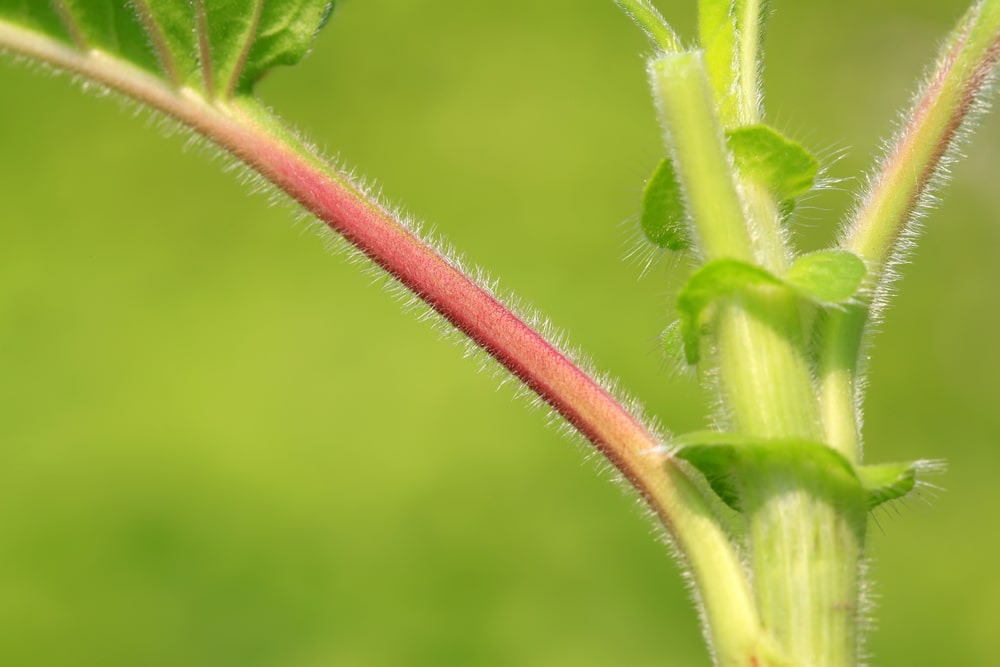Morphology of Stems: The plumule develops to form the stem. Thus stem is an aerial part of the plant. It consists of the axis and the leaves. The stem has got the following characteristics:
- It is ascending axis of the plant and phototropic.
- It consists of nodes, internodes, and buds.
- It gives rise to branches, leaves, and flowers.
- Stems may be aerial, sub-aerial, and underground.
Depending upon the presence of mechanical tissues, the stems may be weak, herbaceous, or woody.
Weak stems
Table of Contents
When the stems are thin and long, they are unable to stand erect, and hence may be one of the following types:
- Creepers or Prostate stem: When they grow flat on the ground with or without roots, e.g. grasses, gokharu, etc.
- Climbers: These are too weak to stand alone. They climb on the support with the help of tendrils, hooks, prickles, or roots, e.g. Piper betel, Piper longum.
- Twinners: This coil the support and grow further. They are thin and wiry, i.e. ipomoea.
Herbaceous and woody stem
These are the normal stems and may be soft or hard and woody, i.e. sunflower, sugarcane, mango, etc.
- Produce leaves and expose them properly to sunlight for carrying out photosynthesis.
- Conducts water and minerals from roots to leaves and buds.
- Foods produced by leaves are transported to nongreen parts of the plant.
- Produce flowers and fruits for pollination and seal dispersal.
- Depending upon the environment it gets suitably modified to perform special functions like storage of foods, means of propagation, etc.
I. Underground modifications of stems
Underground modifications of stems are of the following types:
- Rhizome
- Tuber
- Bulb
- Corm
1. Rhizomes: Grow horizontal under the soil. They are thick and are characterized by the presence of nodes, internodes, and scale leaves. They also possess bud in the axil of the scale leaves, e.g. ginger, turmeric, rhubarb, male fern, etc.
2. Tubers: Tubers are characterized by the presence of ‘eyes’ from the vegetative buds which grow further and develop into a new plant. Tubers are the swollen underground structure of the plant, e.g. potato, jalap, aconite, etc.
3. Bulb: In this case, the food material is stored in fleshy scales that overlap the stem. They are present in the axils of the scales, and few of them develop into a new plant in the spring season at the expense of stored food material in the bulb. Adventitious roots are present at the base of the bulb. The reserve food material formed by the leaves is stored at their bases, and the new bulbs are produced next year, e.g. garlic, squill, and onion.
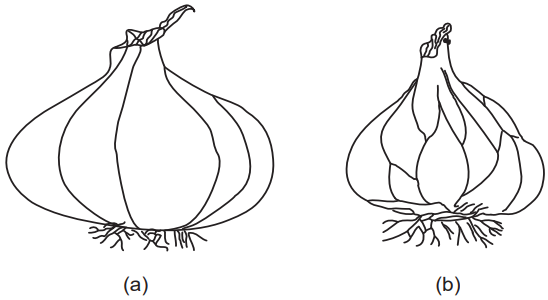
4. Corm: Corms are generally stout, and grow in the vertical direction. They bear bud in the axil of the scaly leaves, and these buds then develop further to form the new plant. Adventitious roots are present at the base of the corm, e.g. saffron, colchicum, dioscorea, etc.
II. Sub-aerial modifications of stems
These include (1) Runner, (2) Stolon, (3) Offset, and (4) Sucker.
1. Runner: These creep on the ground and root at the nodes. Axillary buds are also present, e.g. strawberry, pennywort.
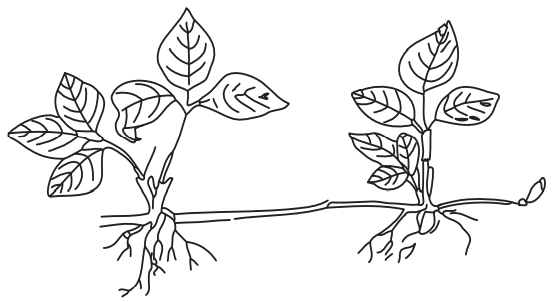
2. Stolon: These are lateral branches arising from the base of the stems which grow horizontally. They are characterized by the presence of nodes and internodes. Few branches growing above the ground develop into a new plant, e.g. glycyrrhiza, arrowroot, jasmine, etc.
3. Offsets: These originate from the axil of the leaf as short, thick horizontal branches and are also characterized by the presence of rosette-type leaves and a cluster of roots at their bottom, e.g. aloe, valerian.
4. Sucker: These are lateral branches developed from underground stems. Suckers grow obliquely upwards, giving rise to a shoot that develops further into a new plant, e.g. mentha species, chrysanthemum, pineapple, banana, etc.
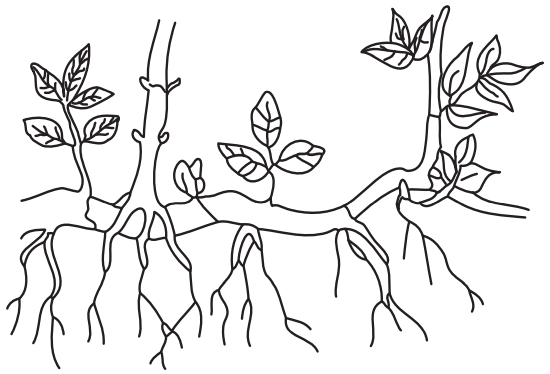
III. Aerial modification of stems
As the name indicates they grow into the air above the soil to a certain height, as follows:
1. Phylloclades: At times, the stem becomes green and performs the function of leaves. Normally this is found in the plants growing in the desert (xerophytes). Phylloclades are characterized by the presence of small leaves or pointed spines, e.g. opuntia, Ruscus, euphorbia, etc. Cladode is a type of phylloclade with one internode, i.e. asparagus.
2. Thorns and prickles: This is another type of aerial modification meant for protection. Thorns are hard, pointed, straight structures, such as duranta, lemon, etc. Prickles and thorns are identical in function. Prickles get originated from the outer tissues of the stem. Thus, they are superficial outgrowths. Prickles are sharp, pointed, and curved structures. They are scattered all over the stem. Rose, smilax can be quoted as examples of the same.
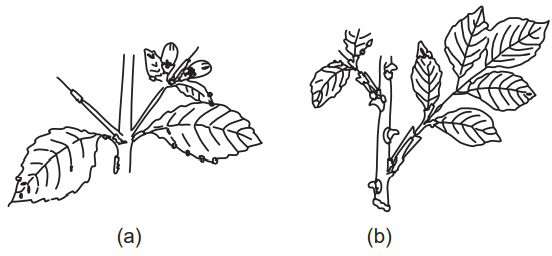
3. Stem tendrils: In certain plants, the buds develop into tendrils for support. Terminal buds in the case of Vitis, axillary bud in the case of passiflora are suitable examples.
4. Bulbils: These are modifications of floral buds meant for vegetative propagation, such as Dioscorea and Agave.
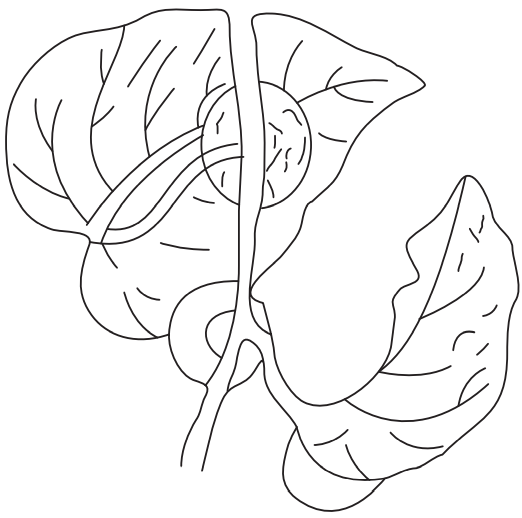
Uses of stems
Depending upon the structural and chemical contents, stems are used for various purposes.
- Underground stems in their various forms are either used as food spices or for culinary purposes like potato, amorphophallus, colocasia, garlic, ginger, and onion.
- Jowar, rice, and other stems are used as fodder.
- Stems of jute, hemp, and flax as sources of industrial fibers used for various purposes.
- Sugarcane stems are used as a source of sucrose while latex from stems of Hevea brasiliensis is used as rubber.
- Woods from stems of several plants are used as drugs like quassia, guaicum, sandalwood, etc.
- The stems of several plants are injured to produce gums for their multiple industrial uses like gum-acacia, gum-tragacanth, gum sterculia, etc.
Make sure you also check our other amazing Article on : Morphology of Bark
